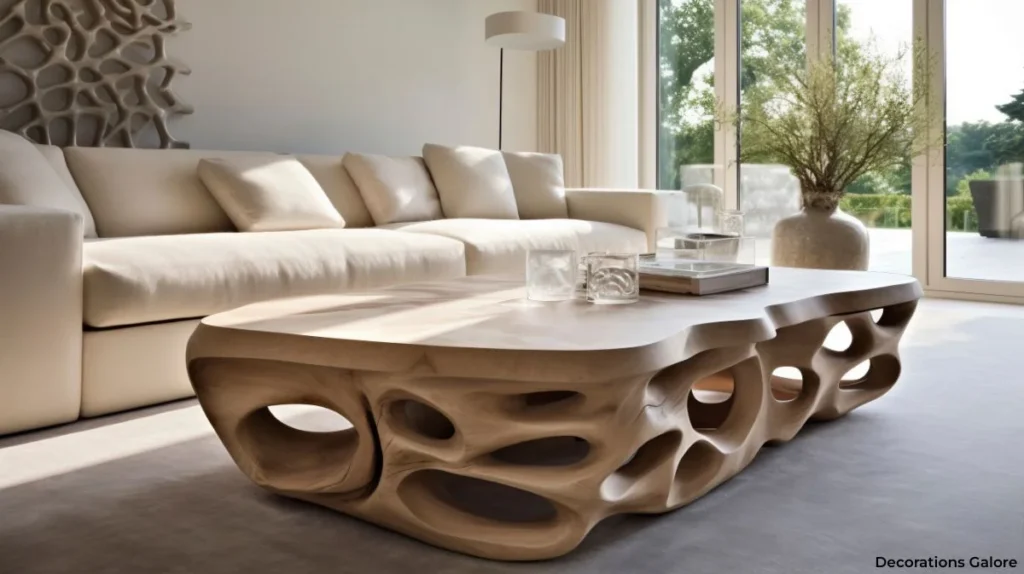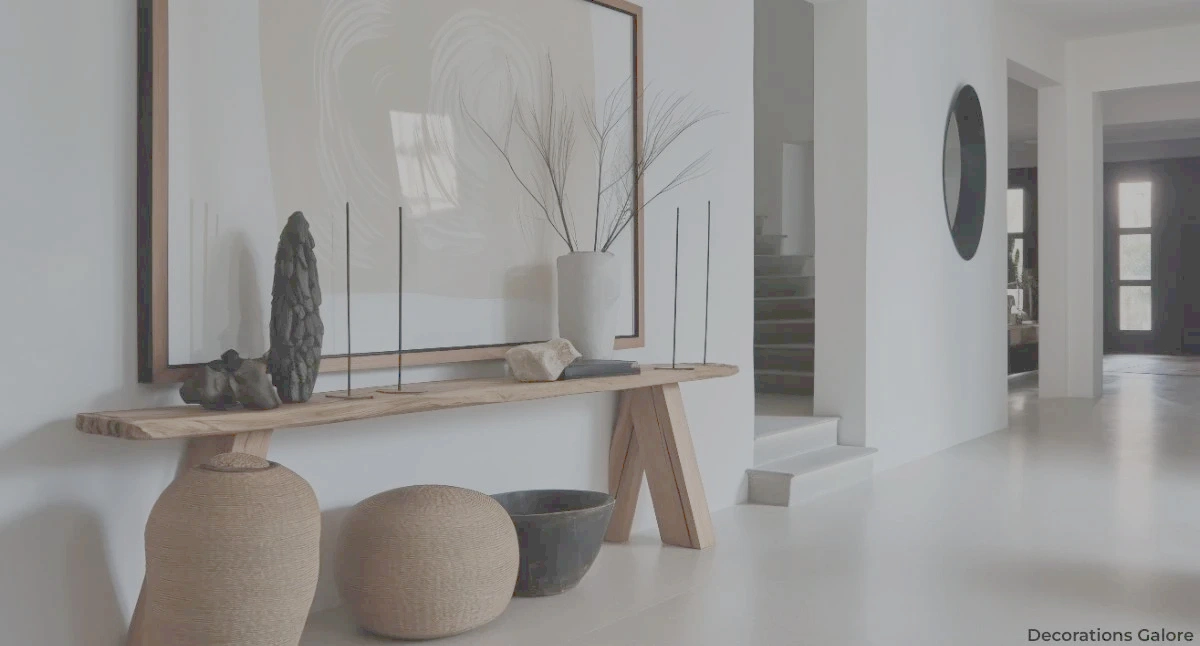Have you ever found yourself wishing for a more organized, tranquil, and aesthetically pleasing home? The minimalist decor style might be just what you need.
This comprehensive guide will help you transform your home into an elegant and functional space by following minimalist principles. Let’s dive into this fascinating world and discover how less can indeed be more.
Table of Contents
What is the Minimalist Decor Style?
The minimalist decor style is defined by simplicity and functionality. It is based on the idea that “less is more,” eliminating excess and focusing on the essential.
This style involves creating open spaces with clean lines and a neutral color palette. The emphasis is on quality over quantity, and each piece of furniture or decorative item should have a clear purpose.
Principles of Minimalism in Decor
To create a minimalist environment, it’s important to understand and apply its basic principles. Here are some of the most important ones:
- Simplicity: The design should be simple and uncomplicated. Avoid complex patterns and excessive ornamentation.
- Functionality: Each element should have a practical function. If something doesn’t serve a purpose, it’s unnecessary.
- Open Space: Prioritize open and airy spaces. Keep the layout fluid and avoid furniture congestion.
- Neutral Colors: Use a neutral color palette like white, gray, beige, and black. These colors create a sense of calm and clarity.
- Quality over Quantity: Invest in high-quality pieces that stand the test of time, rather than accumulating many items.
Choosing the Color Palette
Color choice is crucial in the minimalist style. Neutral colors predominate, but this doesn’t mean the environment has to be monotonous. Here’s how to choose and apply colors:
- White: White is the primary color in minimalism as it reflects light and enlarges spaces.
- Gray: Different shades of gray add depth and sophistication.
- Black: Black can be used to create contrasts and define lines.
- Beige and Earth Tones: These colors bring a sense of warmth and coziness.
Tip: Use subtle touches of more vibrant colors in accessories like pillows, paintings, or plants to add visual interest without compromising the minimalist aesthetic.
Minimalist Furniture
Choosing the right furniture is fundamental to creating a minimalist space. Opt for pieces that are simple, functional, and of high quality.
- Clean Lines: Furniture with straight lines and geometric shapes is ideal.
- Functionality: Prioritize furniture that offers more than one function, such as sofa beds or tables with storage space.
- Natural Materials: Wood, metal, and glass are great options that complement the minimalist aesthetic.
- Less is More: Avoid excessive furniture. A sofa, a coffee table, and a few chairs might be enough for a living room.

Organization and Storage
Maintaining organization is vital in minimalism. Disorganized spaces can quickly become chaotic and counteract the principles of this style.
- Decluttering: Be strict about eliminating what is not necessary. Donate or recycle items you don’t use.
- Storage Solutions: Use built-in shelves, drawers, and cabinets to keep everything out of sight.
- Maintenance: Dedicate some time regularly to reorganize and keep the space clean and tidy.
Purposeful Decoration
Even in minimalism, decoration has its place, as long as each piece has a clear purpose and doesn’t overload the space.
- Minimalist Art: Choose simple and impactful art pieces. Black and white photography or abstract paintings work well.
- Plants: Plants add life and color, besides improving air quality. Choose low-maintenance plants.
- Textures: Adding different textures, such as a wool blanket or a jute rug, can enrich the environment without overwhelming it.
Lighting
Lighting plays a crucial role in the minimalist style, creating cozy and well-lit environments.
- Natural Light: Maximize natural light. Use light curtains or blinds that allow light to pass through.
- Simple Fixtures: Choose fixtures with a simple and elegant design. Ceiling lights, lamps, and floor lamps can add layers of light to the environment.
- Recessed Lighting: Recessed ceiling lights are great for creating soft and uniform lighting.
Inspiring Examples
To truly understand how to apply the minimalist decor style, it can be helpful to see real examples.
Look for photos of minimalist environments in decor magazines or specialized websites. Note ideas and try to apply them in your own home.
Maintaining a Minimalist Environment
After creating a minimalist environment, maintenance is essential to preserve its aesthetics and functionality.
- Periodic Review: Periodically review to get rid of items that are no longer needed.
- Cleaning: Keep the house clean and organized. Regular cleaning helps maintain the inviting and tranquil space.
- Adaptation: Be willing to adapt and change as your needs and lifestyle evolve.

Starting Your Minimalist Journey
Starting to adopt the minimalist decor style might seem challenging at first, especially if you are used to more filled and decorated environments.
However, the transition can be done gradually and in a planned way, allowing you to adapt to the new style and enjoy the benefits of a more simplified and organized home.
Step-by-Step to Adopt Minimalism
- Initial Evaluation:
Before starting the change, make an honest assessment of the environments in your home. Identify the most disorganized spaces and items that are not frequently used. Make a list of the areas that need more attention. - Conscious Decluttering:
Decluttering is one of the pillars of minimalism. Review each room and separate items that have no utility or emotional value. Donate, sell, or recycle these objects. A good start is to follow the “one year without use” rule: if you haven’t used something in the last year, you probably don’t need it. - Space Planning:
Plan the layout of each environment based on functionality and flow of movement. Furniture should be arranged to facilitate circulation and make the space more open and airy. - Choosing Furniture and Decor:
Invest in quality furniture that matches the minimalist aesthetic. Opt for pieces with simple designs, straight lines, and neutral colors. Each item should have a clear functional purpose. For decoration, choose a few items that truly complement the space, such as a minimalist artwork or a low-maintenance plant. - Effective Organization:
Use smart storage solutions to keep items organized and out of sight. Boxes, baskets, shelves, and cabinets are essential to maintain order. Label the boxes and baskets to facilitate organization. - Routine Adaptation:
Adopting minimalism is not just about changing the appearance of the house, but also about changing habits. Create daily cleaning and organization routines to keep the space always in order. Dedicate a few minutes every day to tidy up small details and avoid clutter accumulation.
Benefits of a Minimalist Home
Minimalism goes beyond aesthetics; it brings a series of practical and psychological benefits for those who adopt it:
- Stress Reduction: Clean and organized environments reduce the feeling of overwhelm and stress. Visual clarity contributes to mental clarity.
- Time Savings: Fewer items to clean and organize means more free time for other important activities.
- Increased Focus and Productivity: A space free of distractions facilitates concentration and productivity, whether at work or in personal activities.
- Timeless Style: Minimalism is a timeless style that never goes out of fashion, keeping your home always modern and elegant.
Challenges and How to Overcome Them
Adopting minimalism can present some challenges, especially if you are used to a more accumulative lifestyle. Here are some common difficulties and how to overcome them:
- Emotional Decluttering: Often, the difficulty in getting rid of objects comes from emotional attachment. Ask yourself if the item really brings happiness or is just a habit to keep.
- Family Resistance: Not everyone in the house may be ready to adopt minimalism. Communicate the benefits and involve them in the organization process so they feel part of the change.
- Temptation of New Purchases: Avoid impulsive purchases. Adopt the practice of reflecting on the real need for a new item before acquiring it. Ask yourself if it really adds value to your space and life.

Long-Term Maintenance
Maintaining a minimalist lifestyle is an ongoing process. Here are some tips to ensure you don’t revert to old habits:
- Review Routine: Schedule periodic reviews to assess and reorganize your spaces. This can be done quarterly or semi-annually.
- Conscious Shopping: Before buying something new, consider the impact and need for that item. Ask yourself if it aligns with your minimalist principles.
- Constant Simplification: Always look for ways to further simplify your environment and routine. Minimalism is a continuous journey of simplification and seeking the essential.
Conclusion
Adopting the minimalist decor style can transform not only your home but also your way of living. With a more organized, functional, and aesthetically pleasing environment, you will find more peace and clarity in your daily life.
Remember that minimalism is an ongoing journey of simplification and seeking the essential. By following the principles and tips in this guide, you will be well on your way to creating a minimalist home that reflects your personality and promotes well-being.




